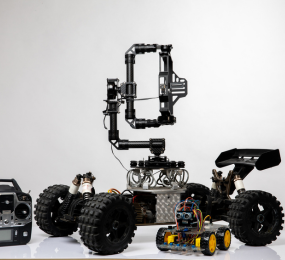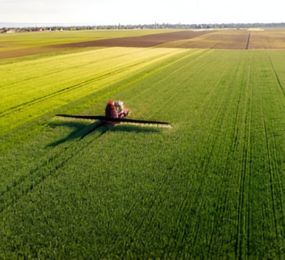The future of non-road mobile machinery (NRMM) is an era where innovation is driven by sustainability and efficiency. This blog explores the exciting advancements and trends that are changing this industry with invaluable insights for those who want to stay ahead of the curve.
Understanding Non-Road Mobile Machinery
Non-road mobile machinery (NRMM) is a term applied to various off-road equipment used in agriculture, construction, and forestry sectors such as tractors, excavators and harvesters. These machines play an important role in increasing productivity across different industries.
The Need for Electrification and Decarbonization
Due to the global emissions regulations becoming stricter and climate change set in, there is a need for electrification and decarbonization in non-road mobile machinery (NRMM). Green energy sources can reduce greenhouse gas emissions and improve air quality while cutting operational costs and noise levels.
Innovations in Battery Technology
Non-road mobile machinery (NRMM) electrification depends on battery technology. Recent developments in lithium-ion batteries focus on improved efficiency and lifespan whereas new alternatives like solid-state batteries or hydrogen fuel cells result in higher energy densities coupled with faster refueling periods. This makes them desirable for heavy-duty applications.
Case Study: John Deere's Electric Tractor
John Deere’s SESAM electric tractor represents significant battery innovation in agriculture delivering equal performance as diesel models but does not emit any fumes thereby reducing noise levels and providing a glimpse of the future of sustainable farming.
Smart Technologies and Automation
The introduction of smart technologies and automation into NRMM is transforming their operations. Predictive maintenance can be achieved through the use of AI and machine learning, which analyze data to predict machinery failures, while IoT connectivity enhances efficiency via seamless communication as well as real-time data collection thereby fostering decision-making as well as productivity.
Case Study: Caterpillar's Autonomous Haulage System
Caterpillar’s autonomous haulage system (AHS) serves as an example of how automation benefits non-road mobile machinery (NRMM) by increasing its productivity, reducing fuel consumption and enhancing safety during mining operations due to the elimination of human mistakes.
Regulatory Landscape and Compliance
Non-road mobile machinery (NRMM) needs regulations for their future since businesses are required to know about tightening emissions standards such as EU’s Stage V or US Tier 4 that they should be adhering to. Consequently, manufacturers are investing in R&D for the development of compliant machines with key focuses being on hybrid systems, cleaner fuels and advanced emission control technologies.
Case Study: JCB's Hydrogen-Powered Excavator
JCB has developed a hydrogen-powered excavator that meets regulatory requirements with no emission, implying it will meet future standards making the company become a leader in sustainable construction equipment.
FAQs
What is non-road mobile machinery?
Non-road mobile machinery (NRMM) includes equipment used in industries like agriculture, construction, and forestry. Examples include tractors, excavators, and harvesters.
Why is electrification important for NRMM?
Electrification reduces emissions; brings down operation costs and lessens dependence on fossil fuels thus leading to sustainability.
What are the biggest challenges in NRMM electrification?
These involve battery technology limitations; costly upfront pricing along with inadequate charging infrastructure.
Market Growth and Adoption Statistics
The NRMM market is expanding rapidly, due to technology and compliance pressures. According to the MarketsandMarkets report, the global market will reach $20.5 billion by 2025, growing at a CAGR of 15.6%. This overall growth is largely due to its increased use in agriculture, construction and mining.
Battery Technology and Performance
Lithium-ion batteries have made significant strides in terms of energy density and lifespan while costs have decreased by 89% over the last ten years benefiting NRMM manufacturers and operators. The NREL indicates that solid-state batteries could reduce charging time by up to a half.
Emission Reduction Impact
By adopting electric non-road mobile machinery (NRMM), greenhouse gas emissions can be cut by up to 40% while noise pollution can go down by almost 60%, making it more comfortable for operators.
Boosting Productivity
Incorporating smart technologies and automation into NRMM can significantly boost productivity (McKinsey & Company). For example, AI predictive maintenance could reduce downtimes by roughly about 20 percent but IoT connectivity enhances efficiency levels by approximately 15%. Caterpillar has realized an increase of thirty percent in mining productivity through its autonomous haulage system reducing fuel consumption by eleven percent.
These statistics show that electric NRMMs, combined with smart technologies are poised to radically transform this industry towards sustainability.
Conclusion
Growth is expected in the sector of non-road mobile machinery due to developments in electrification as well as battery technology, smart systems plus sustainability factors. Those businesses that adapt will comply with regulations while also gaining an edge over their competitors. Participating in forums like the Non-Road Mobile Machinery Electrification and Decarbonization Forum can provide valuable networking opportunities and insight or other important information.










